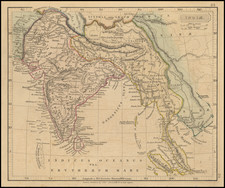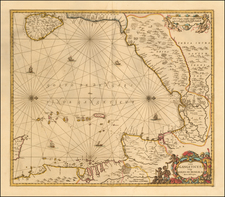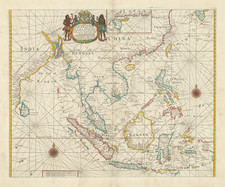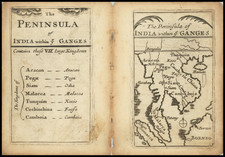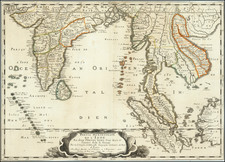Fine early view of Ayutthaya, from Mallet's Description De L'Univers, first published in Paris in 1683.
Ayutthaya, founded in 1350 as the second capital of the Siamese Kingdom, represents a remarkable chapter in the history of Southeast Asia. Its establishment on an island surrounded by three rivers, chosen for its strategic location above the tidal bore of the Gulf of Siam, exemplifies a blend of foresight and ingenuity. This choice not only safeguarded the city from maritime invasions but also mitigated seasonal flooding, illustrating a sophisticated understanding of natural defenses and urban planning. Flourishing from the 14th to the 18th centuries, Ayutthaya emerged as a global hub of diplomacy and commerce, rivaling the largest and most cosmopolitan cities of its time.
The city's demise came in 1767 when it fell to the Burmese army, leading to its abandonment and leaving behind an extensive archaeological site. The remnants of Ayutthaya, such as the prang and Buddhist monasteries, reflect the city's historical magnitude and architectural splendor.
Ayutthaya's urban layout, discernible on this view, was methodically organized, integrating roads, canals, and moats around principal structures. Its advanced hydraulic system for water management was unique for its time. Strategically positioned at the head of the Gulf of Siam, equidistant between India and China, Ayutthaya thrived as a nexus of regional and global trade, connecting East and West. The Royal Court of Ayutthaya engaged in diplomatic exchanges with various global powers, including Versailles in France and the Mughal Court in Delhi. The city was a melting pot of cultures, with foreign traders and missionaries residing in distinct enclaves, each contributing to the city's architectural and artistic diversity.
Alain Mannesson Mallet (1630-1706) was a French mapmaker and engineer who served in the armies of Louis XIV. After rising through the ranks, Mallet was appointed as Inspector of Fortifications, a job which also required mathematical skills and which made him a competent military engineer. Eventually, he joined the court of Louis XIV at Versailles, where he taught math and focused on writing.
Mallet is best known for his Description de L’Univers, first published in 1683, in five volumes. A wide-ranging geographical work, the Description included textual descriptions of the countries of the world, as well as maps of the celestial sky and the ancient and modern worlds. The Description continued to be published until the early eighteenth century. He also published a work in three volumes on warfare (1684) and a primer on geometry (1702).









